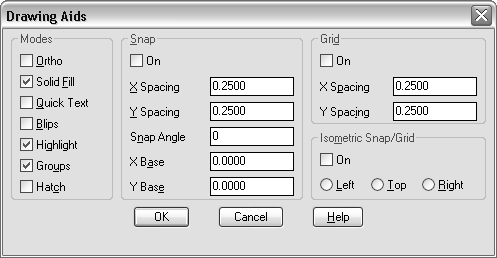
I have been using ACAD for about 15 years, but have never had any experience with lisp routines. I followed contributor P's advice and found the Dimnote.lsp and dimnote.dcl with an online search. Sorry, in the above post \X \P are the correct codes, not what was posted in the jpeg. You could post the contents of the lisp routine, and perhaps I or someone else can find the offending part of the lisp routine. Here's what mine looks like, and I also attached a sample with alternate dimensions. This only occurs when I have alternate dimensions on. I am getting a /X instead of it placing below the dimension. Thank you everybody - this is a great forum!Ĭontributor P, great lsp, thanks. This allows you to write in your most used text with dimensions inside the lisp routine and access them from a dialogue box.

Search for a lisp routine called Dimnote.lsp and its corollary file dimnote.dcl.
#Autocad lisp entsel nil full
There's one more way of adding text to dimensions (without removing dimensions) if you are using full blown AutoCAD. Just goes to show you there are many ways of doing something in AutoCAD. There are routines that highlight edited, or overridden dims, but we don't really have much of a problem with that anymore. (setq newdim (entsel "\n Select Dimension Clear:"))Ĭlr returns the brackets that you seek. (setq newdim (entsel "\n Select Dimension to Add VERIFY to:")) (setq newdim (entsel "\n Select Dimension to Replace with EQ.:")) (command "dimedit" "n" newdimvalue newdim "") (setq newdim (entsel "\nSelect a dimension to add +/- VIF:")) When the fabricator got the blanks, he was wondering why they didn't match the drawing. I pulled the geometry off the drawing and sent them to our CNC. displayed measurements, but I trusted the source. I guess I should have checked the actual vs. Make the drawing right! We recently received some countertop drawings from an engineering firm. We use dimensions like (TYP) so we edit the text quite often.Īmen to contributor C's comment about not overriding the dimension. Then pick the dimension you want to modify and a text edit box opens up. Either pick the icon or type it on the command line. Just repeat command, type in the brackets, and the correct dimension will reappear. If you want to remove the brackets, you may replace them later. We almost have that policy because if you are not aware of an overridden dimension, you can really cause a job to go bad.Īcad command: Modify, Object, Text, Edit.

This is a very risky practice that in many places will result in automatic termination. Just don't get into the habit of removing those brackets and overriding the dimension.
#Autocad lisp entsel nil update
You can convey information a lot more clearly doing this and still have the dimension update as things change. A, +/-, HOLD, CLEAR and all kinds of other common dimedits. We have about 25 custom macros for this in our office, from VIF, VFY to EQ. We use them followed by various words (like (V.I.F.)) so that the dimension will still update. Remember, if you want both the dim and your text, leave the brackets - they are the placeholder for the measured dimension. As stated above, you can use the properties box, or you can use ddedit, or dimoverride.
#Autocad lisp entsel nil full size
Here is a picture so you can understand better.Ĭlick here for higher quality, full size image If you only want to have the text, then just type whatever you need in the text box. The symbols keep the current dimension number in your drawing and then you can add whatever text you need.

The easiest way is to double click the dimension you want to edit - go to properties - scroll down to text, text override box and type TBD. Well, there are a couple ways to do this. How do I put words or letters in the place of the measurement number when dimensioning my drawings? For example: TBD, EQUAL.


 0 kommentar(er)
0 kommentar(er)
